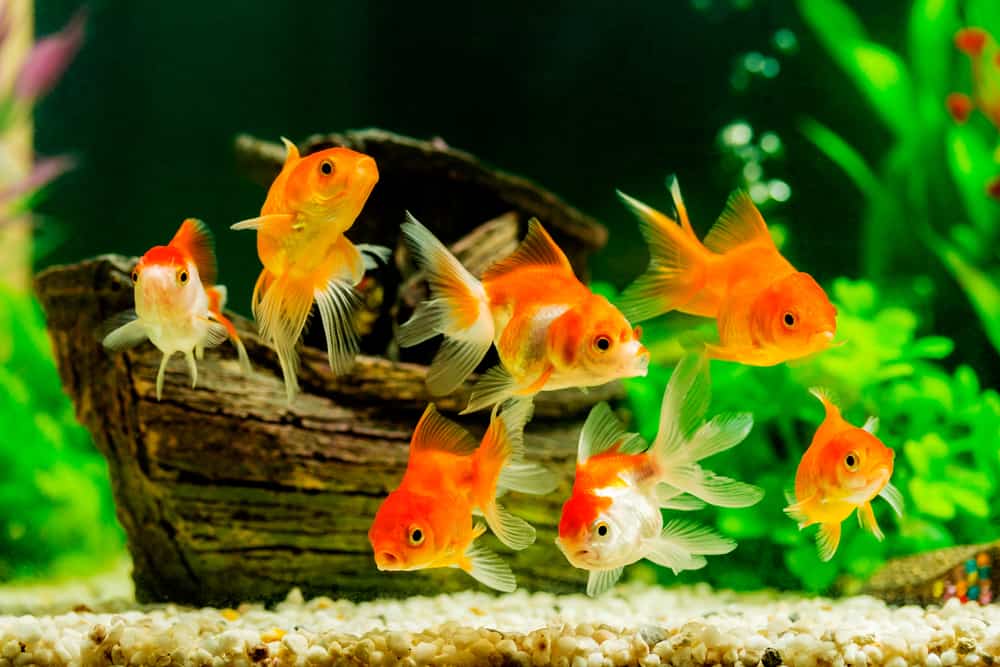
Goldfish are very popular pets among fish keepers, both professionals and amateurs.
There are various species of goldfish you can keep, with very different physical characteristics and needs.
Some can live in ponds and some in aquariums.
Some are fairly delicate, and some are hardy.
Some stay small, but some get so big that you can’t take care of them in a tank.
If you’re planning on keeping a goldfish in a small tank or pond, it’s best to choose the appropriate breed.
What Are the Smallest Types of Goldfish?
Though you can’t keep goldfish in mini aquariums, you can keep some species in tanks as small as 15 to 20 gallons.
The smallest goldfish varieties are fancy ones that grow up to five or six inches.
These include the Pompon Goldfish, Bubble Eye Goldfish, Celestial Eye Goldfish, Pearlscale Goldfish, and the Butterfly Tail Goldfish.
The Telescopic or Moor Goldfish, Tosakin Goldfish, Ryukin Goldfish, Fantail Goldfish, Veiltail Goldfish, Lionhead Goldfish, and Ranchu Goldfish are breeds that grow approximately six to eight inches.
Other varieties can grow up to 10 inches.
These include the Oranda Goldfish, Wakin Goldfish, Jikin or Peacock Tail Goldfish, and Tamasaba Goldfish.
Some goldfish species can grow as big as 12 or 14 inches.
The Common goldfish, Comet, Nymph, and Shubunkin goldfish are all single-tailed varieties which can’t be classified as small goldfish.
They’re common, fast-swimming fish which can live in both ponds and aquariums.
All goldfish species are tiny when they’re born, and they’ll stay small for a while, but they mature and reach full size if they’re in the right environments and living conditions.
Also, fish that are kept in ponds tend to get bigger.
Now let’s get into the details about the small goldfish varieties and learn more about them individually.
1. Pompon Goldfish
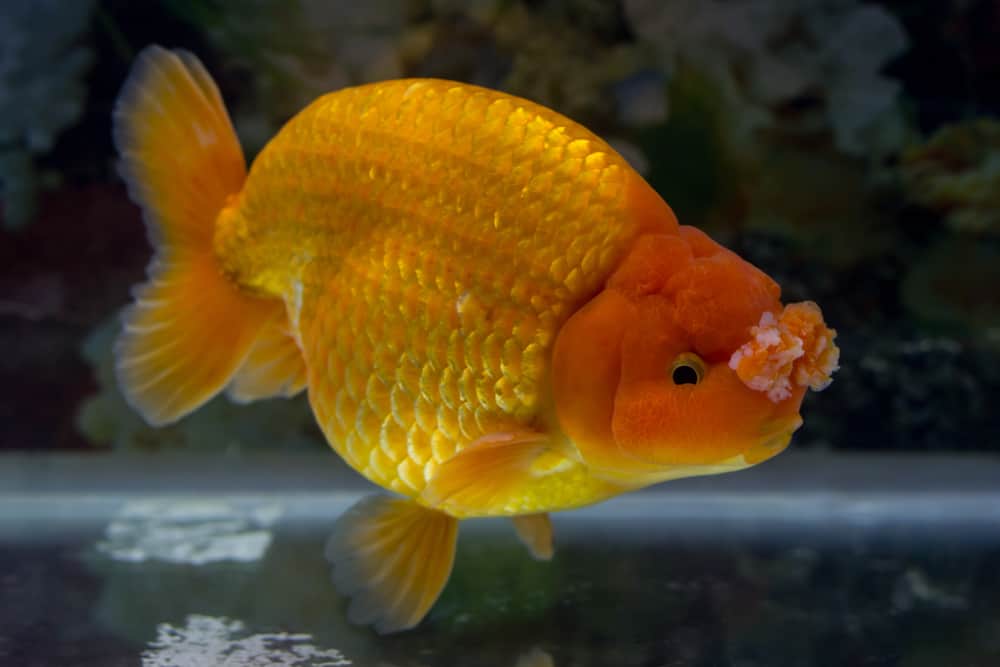
Pompon goldfish are one of the smallest varieties and one of the most interesting.
They grow about five inches.
Their most noticeable feature is the enlargement of the nasal septum, which comes in the shape of fleshy outgrowths on their heads, and works as a sensor for odors.
This is why many people commonly call them Pompoms, although their name is actually Pompons.
They come in red, orange, white, black, brown, yellow, and blue colors.
They have egg-shaped bodies, twin tail fins, and double anal fins, but no dorsal fins, bumps, or hollows.
However, breeding and mating them with other goldfish varieties such as Orandas, Bubble Eyes, and Fantails can lead to some interesting traits such as dorsal fins and telescopic eyes.
The pom-poms on their nose start to grow when they’re about four or five weeks old, and it takes some time for the bouquets to fully develop.
Typically, the facial tissues are the size of their eyes, but they can get so big that they get sucked into their mouth every time they breathe.
Pompons are delicate goldfish.
Taking care of them is hard because their facial tissue can increase their risk of infection or injury.
You shouldn’t keep Pompons with faster goldfish.
They prefer to be around other slow-moving and delicate goldfish such as Bubble Eye, Ranchu, Celestial, Oranda, and Lionhead.
Also, Pompons can’t survive in outdoor ponds.
2. Bubble Eye Goldfish
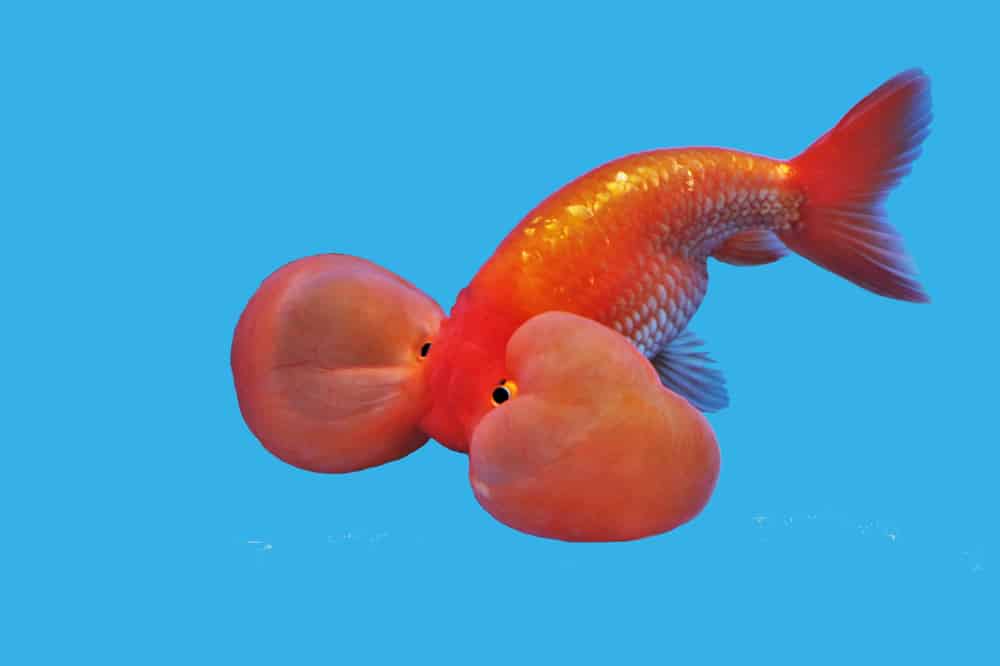
The Bubble Eye goldfish is one of the most exotic-looking varieties since they have large sacks of flesh underneath their eyes, filled with water.
These sacks resemble bubbles, and they can get so big that they can obscure the goldfish’s vision.
This is why you should keep them in completely safe aquariums, without any sharp ornaments, rocks, decorations, or dangerous filters.
Bubble Eye goldfish are delicate slow swimmers and shouldn’t be kept in ponds.
They grow to about five inches and come in red, calico, black, chocolate, and blue colors.
They have egg-shaped bodies with a double tail, and much like Pompon goldfish, they usually don’t have dorsal fins, which makes swimming hard for them.
Don’t keep the Bubble Eye Goldfish with fast-swimming, competitive goldfish species, such as Comet goldfish or Common goldfish, because they can’t get enough food and survive.
Suitable tankmates are other delicate and handicapped goldfish types.
3. Celestial Eye Goldfish
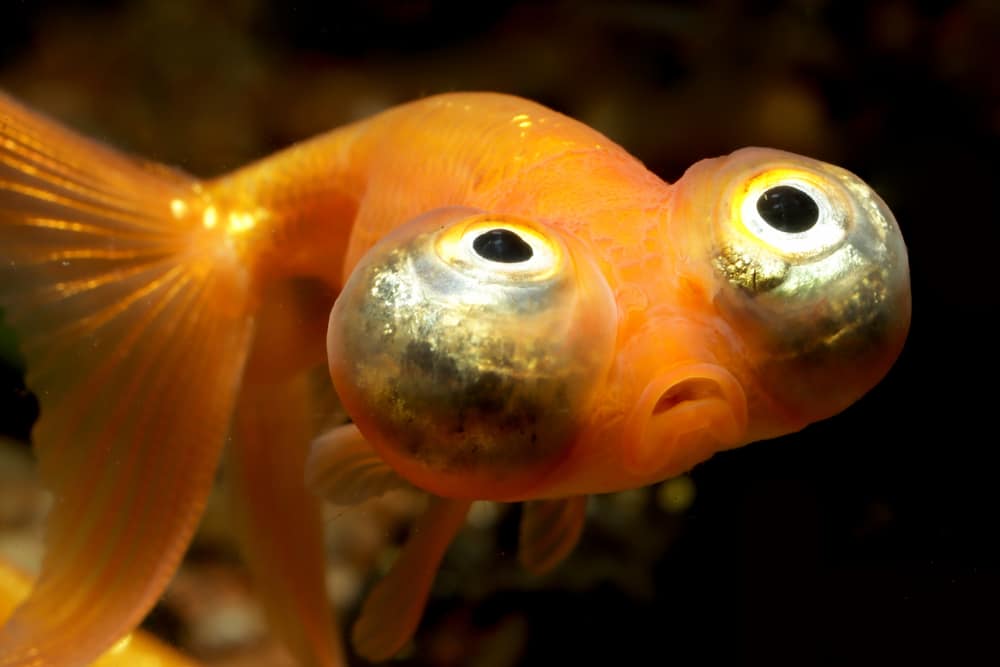
The Celestial Eye goldfish is probably the most unusual goldfish variety, and it’s extremely high-maintenance.
Only experienced hobbyists succeed in taking care of them.
Celestial Eye goldfish grows up to five inches.
They have double tails and double anal fins, and they’re available in red, orange, black, and calico.
Their eyes seem normal when they’re young, but as they grow, they protrude and extend out from the sides of their heads, eventually becoming locked into an upward-looking position.
Despite their appearance, they don’t have strong vision.
That’s why it’s important not to put rough-edged ornaments and decorations in the tank.
These goldfish have egg-shaped bodies, but because of their upward-pointing eyes, they push their heads downwards and lift their bodies so they can see straight.
This, and their lack of dorsal fins, make them slow swimmers.
You shouldn’t keep them with fast and competitive goldfish.
They’re more sensitive to water quality than other members of their family, and they’re prone to many diseases.
That’s why keeping them is challenging.
You should also pay attention to the aquarium lights.
Because they’re constantly looking upwards, too much light will hurt their eyes.
Get dimmer lights for their tanks and turn them off at night to let them get some sleep.
4. Pearlscale Goldfish
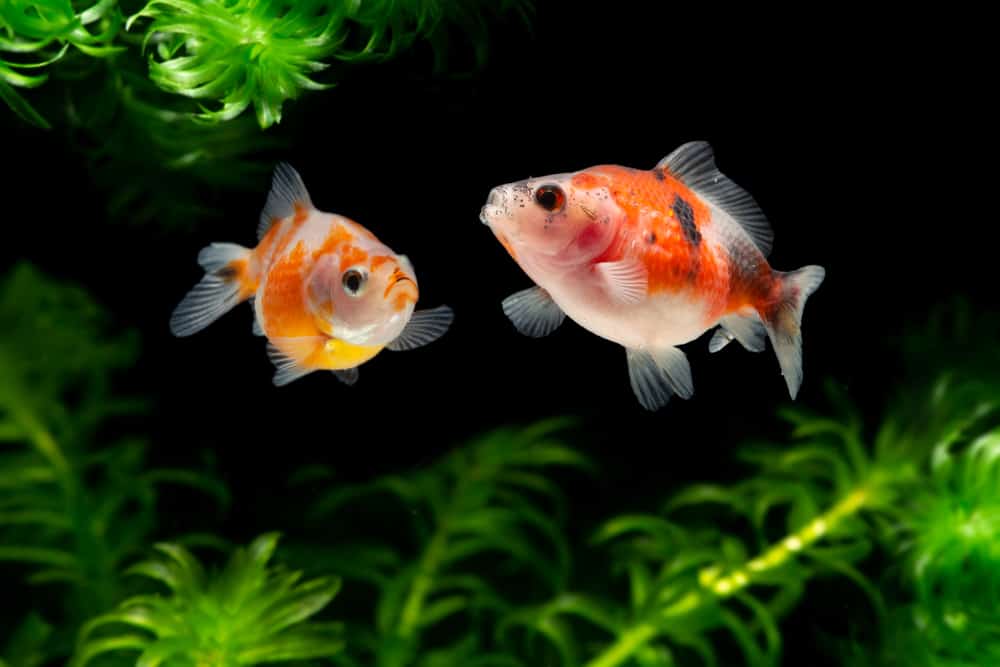
The Pearlscale goldfish is among the most beautiful goldfish varieties.
It’s also referred to as the Golf Ball goldfish because it has a round belly.
The pearl-shaped scales all over the bodies make them look stunning.
The scales are the result of extra calcium carbonate building up under their skins.
Their rounded bodies and beautiful scales develop as they mature.
Pearlscale goldfish are bred genetically, so you can’t find them in the wild.
They come in various colors like red, orange, white, black, blue, chocolate, and even calico and bi-colored varieties.
They grow up to five or six inches.
Pearlscales are hardy fish which can survive in ponds despite their fragile appearance, but it’s better to put them in an aquarium to show off their looks.
5. Butterfly Tail Goldfish
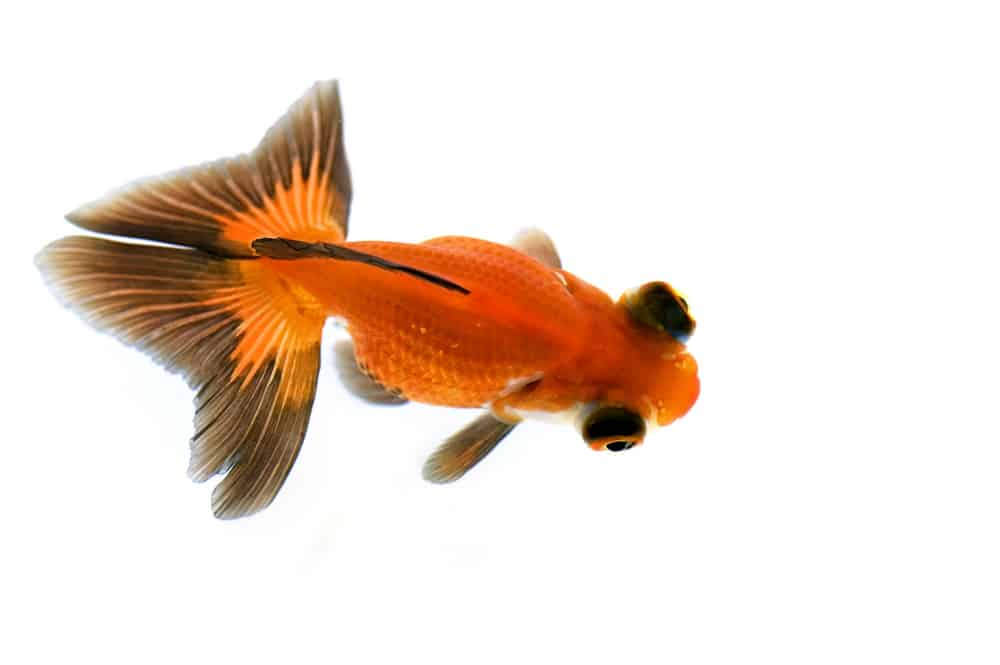
The Butterfly Tail is another genetically bred goldfish variety, and the result is spectacular.
These slow-moving goldfish have long, flowing tails which resemble butterflies from above.
They grow up to five inches and come in red, white, black, and calico.
Recently, matte white, lavender, blue, panda, and tri-colors have been introduced.
Some of these fish have regular eyes, and some have telescopic eyes.
There’s a hump on their backs, and their dorsal fins are pretty long.
The Butterfly Tail goldfish is one of the most delicate goldfish species.
You shouldn’t house them with fast-swimming and athletic fish like the Common goldfish and Comet goldfish, especially if they have poor vision because of their telescopic eyes.
You also shouldn’t keep them in ponds, since they’re highly prone to diseases.
6. Telescopic or Moor Goldfish
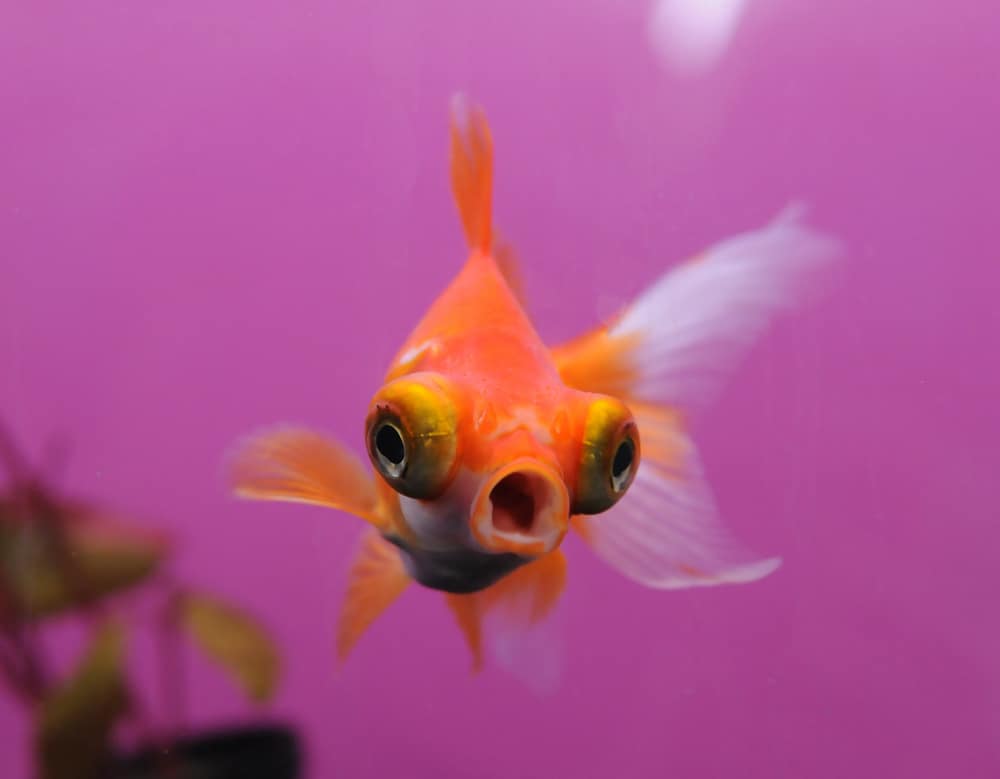
The Telescope Eye or the Moor goldfish come in different varieties with different colors.
However, they all have the same large eyes that resemble a telescope and get bigger as they mature.
They’re also known as Dragon Eye goldfish.
They grow to six to eight inches and have long and flowing fins and tails.
They’re all delicate goldfish varieties with egg-shaped bodies and poor eyesight.
A popular variety is the Black Moor goldfish.
They have lighter colors when they’re juveniles but turn black as they grow.
Sometimes, they won’t stay black, though.
They can inherit an underlying red, orange, or yellow color.
If the black color partially fades, they’ll turn into a Red Panda Moor.
If it fades completely, they’ll become Red Moors.
A Panda Moor is a black and white telescope goldfish that looks like a little panda.
Their bodies are white, and their tails and fins are black.
They may have black spotting all over their bodies, as well.
All kinds of Telescopic goldfish should be housed with other delicate goldfish varieties.
7. Tosakin Goldfish
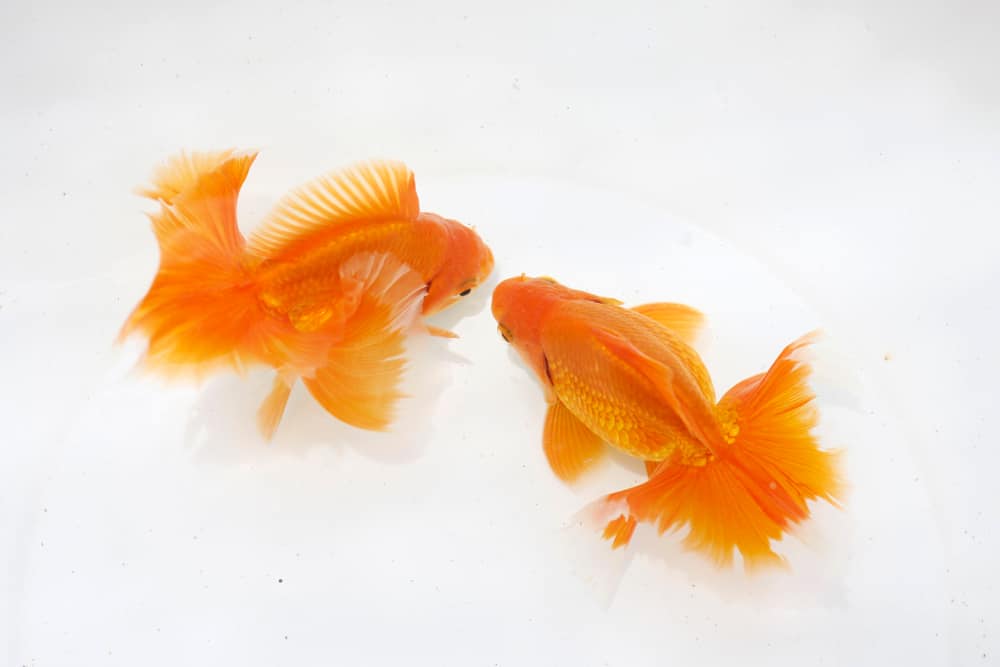
Tosakin goldfish are originally from Japan.
It’s said that, after the World War II bombings in the country, only a handful of Tosakin goldfish survived.
Their owner re-established the breed, and every Tosakin goldfish that lives now comes from those fish.
They’re still rare in the world, and you can mostly find them in their home country.
Tosakin goldfish are famous for their beautiful and unique tails.
They’re the only goldfish variety with undivided twin tails.
Looking at these fish from the top is magnificent, and their tails are so beautiful that they’re named cherry blossom tails.
They have egg-shaped bodies and full dorsal fins.
They come in red, black, or rarely, calico colors, and they grow four to eight inches.
Given the shape of their tails, they’re slow swimmers, and it’s best to keep them with their own kind to prevent them from starving.
Some keepers have had success in keeping them with other slow-swimming goldfish varieties.
8. Ryukin Goldfish
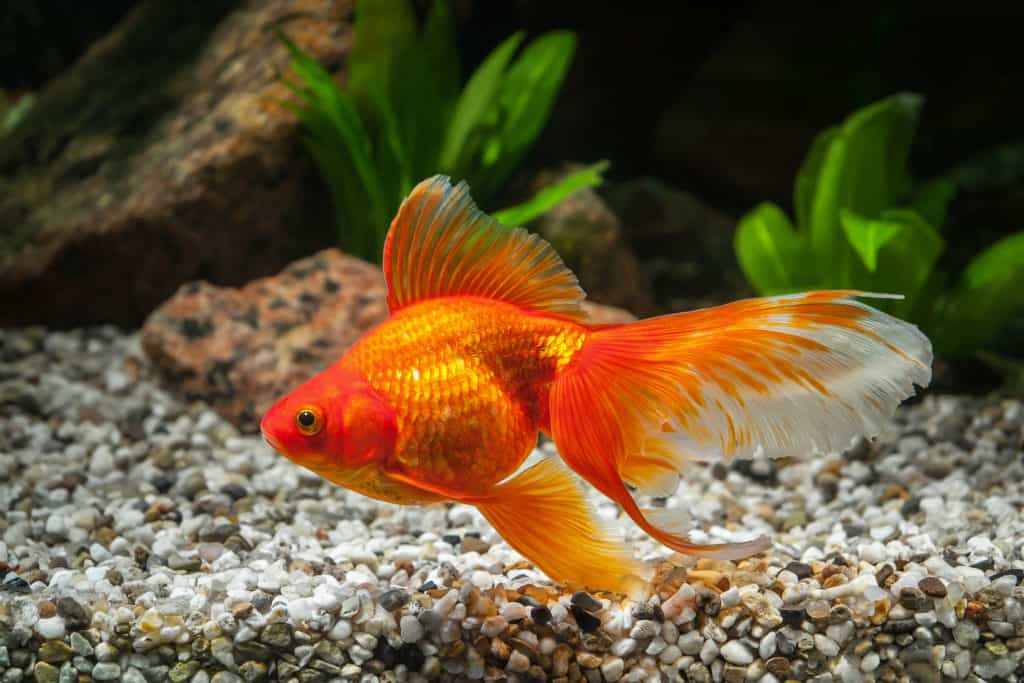
The Ryukin goldfish is also a beautiful goldfish variety, which comes in various colors like red, white, chocolate, and calico.
You can even find tri-colored Ryukins.
They usually grow about eight inches long, and some of them are nearly as tall given their body shapes.
They have egg-shaped bodies and round bellies, with a large dorsal hump on their backs.
They also have beautiful double-finned tails.
There are short-finned and long-finned varieties, and of course, the ones with long and flowing fins are more popular.
These types also come in more vibrant colors.
Ryukin goldfish are hardy and easy to take care of, and you can even keep them in ponds.
As for personality, they hit the middle ground.
They tend to get a bit aggressive towards fast-swimming single-tailed goldfish, and they’ll bully delicate and weaker fish like Bubble Eye and Celestial goldfish.
However, you can keep them with their own kind or with other dual-finned fish of the same size, such as Black Moors, Lionheads, Fantails, Ranchus, and Oranda goldfish.
9. Fantail Goldfish
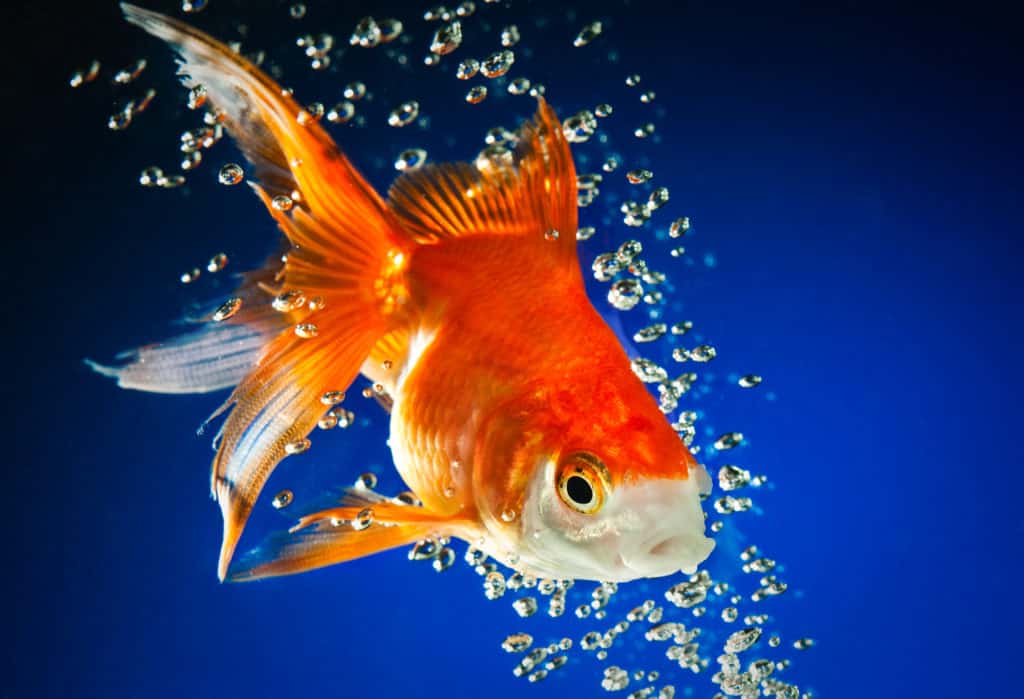
The Fantail Goldfish probably has the most ordinary features among small goldfish.
They have no weird eyes, or bumps, just a beautiful tail.
They’re actually the genetic source of many fancy goldfish breeds.
They have round, egg-shaped bodies with double caudal fins and sometimes anal fins, which look like a fan from above.
Some Fantails with longer tails are called Ribbon-Tailed Fantails.
Fantails grow six to eight inches, and they come in red, orange, yellow, black, white, calico, red, and white.
They’re among the hardiest goldfish out there since they can tolerate warmer waters and live in ponds.
Just like Ryukins, Fantail goldfish are competitive.
They’re slower than single-tailed goldfish like Comets and Common goldfish and shouldn’t be housed with them or in a community tank.
However, they will bully weaker goldfish types.
Their most appropriate tankmates are other Fantails, Ryukins, and Orandas.
10. Veiltail Goldfish
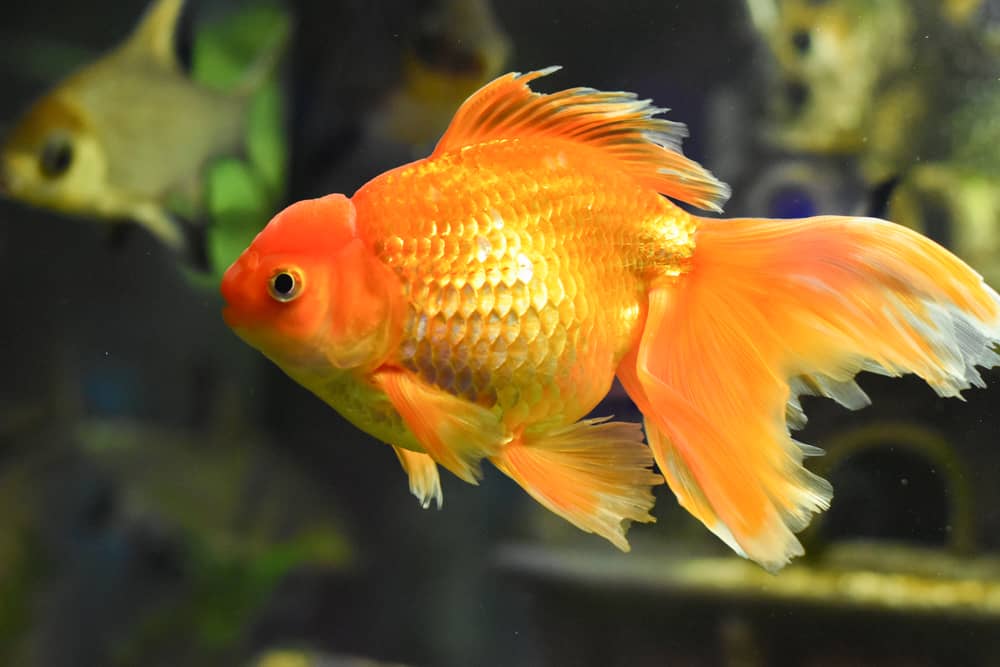
The Veiltail Goldfish is truly the bride of the fancy goldfish family.
It looks a lot like a Fantail, but it has a round body and a much longer tail, which flows gracefully as it swims.
Its double tail is thin and transparent, and it can get four inches long.
Their dorsal fins are also longer than the Fantail’s, as it can grow two inches and make them look bigger.
Veiltails can tolerate colder temperatures, but they’re slow swimmers because of their compact bodies and long fins.
They won’t win any races when it comes to food.
Their delicate tail and fins are prone to injury and infections, as well.
This is why you shouldn’t house them with competitive fish. It’s best to keep them with Bubble Eyes, Telescope Eyes, Celestial Eyes, and Lionheads because they’re too delicate for fast-swimming fish and community tanks.
These beautiful goldfish can reach eight inches in length and come in red, orange, white, brown, variegated, or calico colors.
11. Eggfish Goldfish
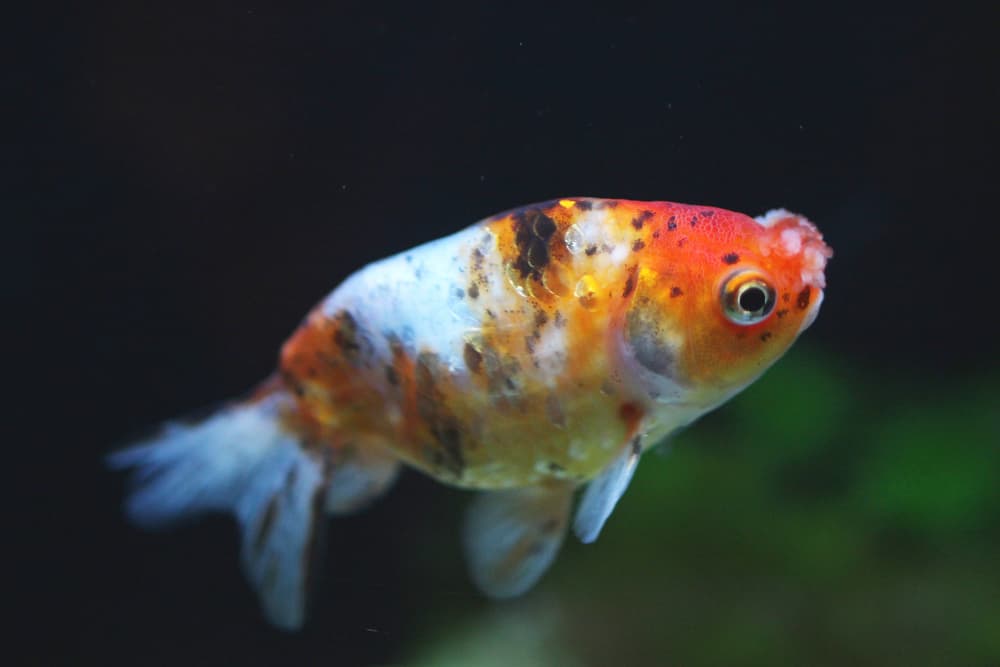
Eggfish goldfish are bred from Fantail goldfish and have rather similar physicalities, minus the dorsal fins.
This makes them look very much like an egg, hence their name.
Much like Fantails, they grow six to eight inches.
Eggfish have pointed heads with no head growth.
They come in white, red, gold, and bi-colored varieties.
The Phoenix goldfish are a subspecies of the Eggfish, but with longer tails.
Their caudal tail looks like a flowing veil, making them slow-swimmers and prone to fin nipping.
They look like Veiltail goldfish, but without dorsal fins.
Their features make them a very in-demand variety, but they’re pretty rare and expensive, especially the blue Phoenix goldfish.
Because of their longer fins, they seem bigger than Eggfish.
12. Lionhead Goldfish

The Lionhead goldfish comes from China and is fairly popular among hobbyists.
It has a rounded and egg-shaped body, dual fan-shaped tail, and no dorsal fin.
Its most noticeable feature is the raspberry-like tissue on its head, which is called a hood.
Its head is broader than typical to provide the space for the hood’s growth.
The hood also develops on the cheeks and gill plates, and it resembles a lion’s mane, hence the name.
This type of goldfish grows six to eight inches, and it comes in red, orange, blue, chocolate, and black.
Calico, bi-colored, and tri-colored varieties are common, too.
Given its round body and lack of dorsal fin, the Lionhead can’t swim fast or maneuver in the water.
This means you should keep it away from slimmer goldfish like the Common goldfish.
The Lionhead looks a lot like the Ranchu goldfish, which originated in Japan.
However, they have different characteristics, which we’ll cover next.
13. Ranchu Goldfish
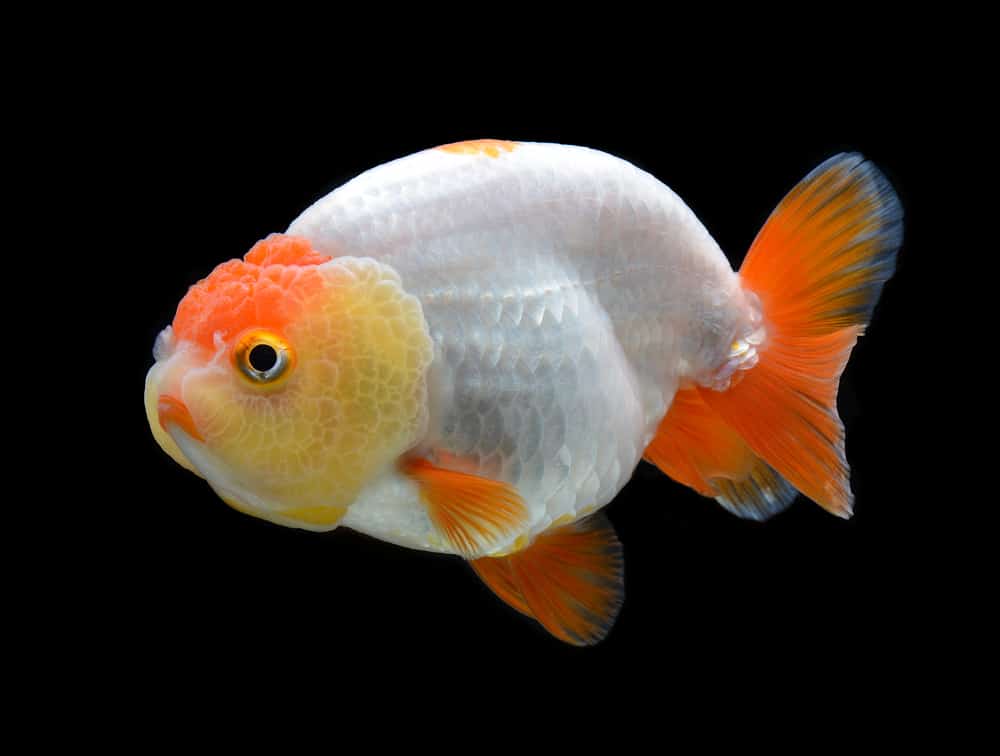
The Ranchu is highly valued and referred to as the “king of the goldfish” in Japan.
The upward arch on their broad backs distinguishes them from Lionheads.
This makes their tails turn downwards.
Their bodies are also longer than the Lionhead’s, but their heads are smaller than their bodies.
Their other features are much like the Lionhead: egg-shaped bodies but no dorsal fins.
They have double tails, grow six to eight inches, and come in red, orange, gold, white, black, and calico colors.
Their perfect companions also are the same as Lionheads.
There’s also a goldfish hybrid called the Lionchu, which is a cross between the Ranchu and Lionhead.
Its body looks like a Ranchu, and it has a broad head and fantail like a Lionhead.
14. Oranda Goldfish

Oranda goldfish are very beautiful and popular.
They’re delicate fish that can’t handle cold temperatures.
They look a lot like Lionheads, but with one major difference: they have big erect dorsal fins.
They have caps on their heads that fully develop after a couple of years.
The caps can stay on their heads like a bump or spread to their face and cheeks.
They have rounded, wide bodies, long double caudal fins, and large scales.
They normally grow about seven inches, but depending on their living conditions, they can get to nine or 10.
Orandas have various colors, but one of the most in-demand is the red-capped white Oranda.
There are black, red, chocolate, blue, and calico varieties, as well.
These fish don’t do well in community tanks, ponds, or with fast-swimming goldfish species.
It’s wiser to keep them with other small and delicate goldfish.
15. Wakin Goldfish
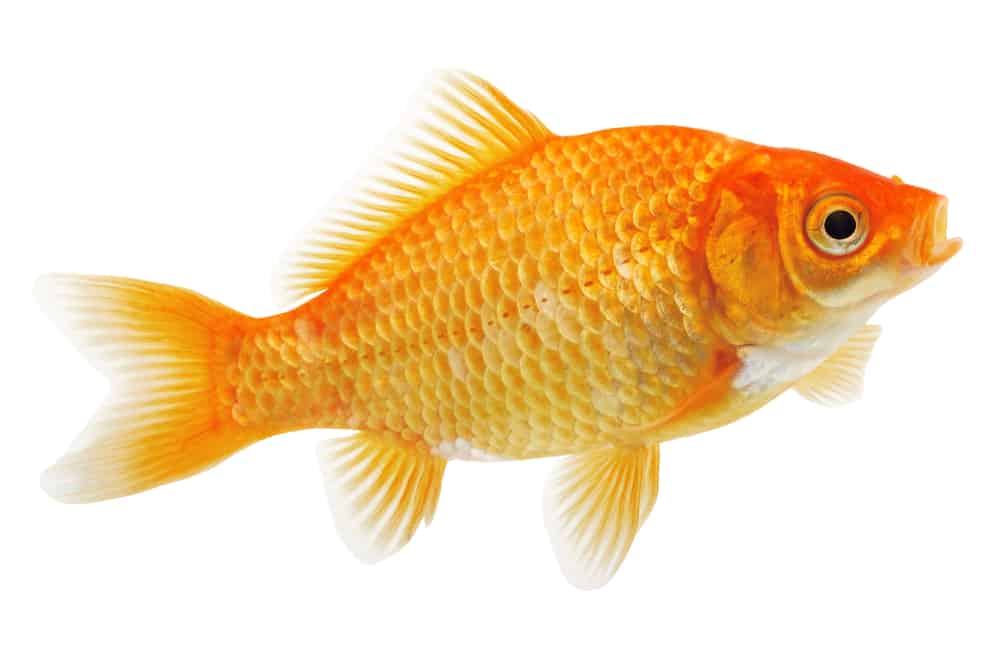
The Wakin goldfish is a small variety which can live both in ponds and aquariums.
It looks like a cross between the Comet goldfish and the Fantail.
Its body shape looks like a Comet, but its caudal fins resemble a Fantail’s, but shorter.
They’re hardy fish and strong swimmers.
They don’t have any special requirements, but you should pay attention to their companion fish.
Because of their competitive behavior and big appetites, they’ll leave no food for slow-swimming goldfish types.
If you keep them in aquariums, they’ll grow to about 10 inches, but some Wakin goldfish have grown more than that in ponds.
You can commonly see red or red and white Wakin goldfish, but they also come in other colors like orange, yellow, brown, and black.
16. Jikin or Peacock Tail Goldfish
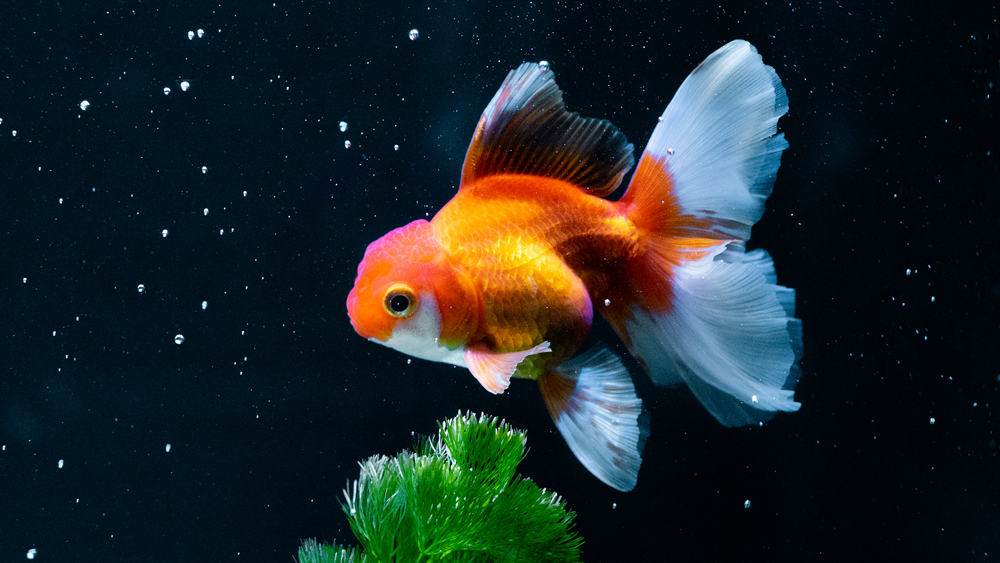
The Jikin goldfish look a lot like the Wakin, but with a more unique color pattern.
They’re a rare species from Japan, with a long and slender body like a Common or Comet goldfish.
What sets this goldfish species apart is that they’re white or silver with six red points on their bodies: their lips, caudal, anal, dorsal, pectoral, and ventral fins.
Another noticeable feature is their wide-spread, four-lobed tail, which looks like an “X” from above.
They grow up to 10 inches, and they can live in ponds and aquariums.
17. Tamasaba or Sabao Goldfish
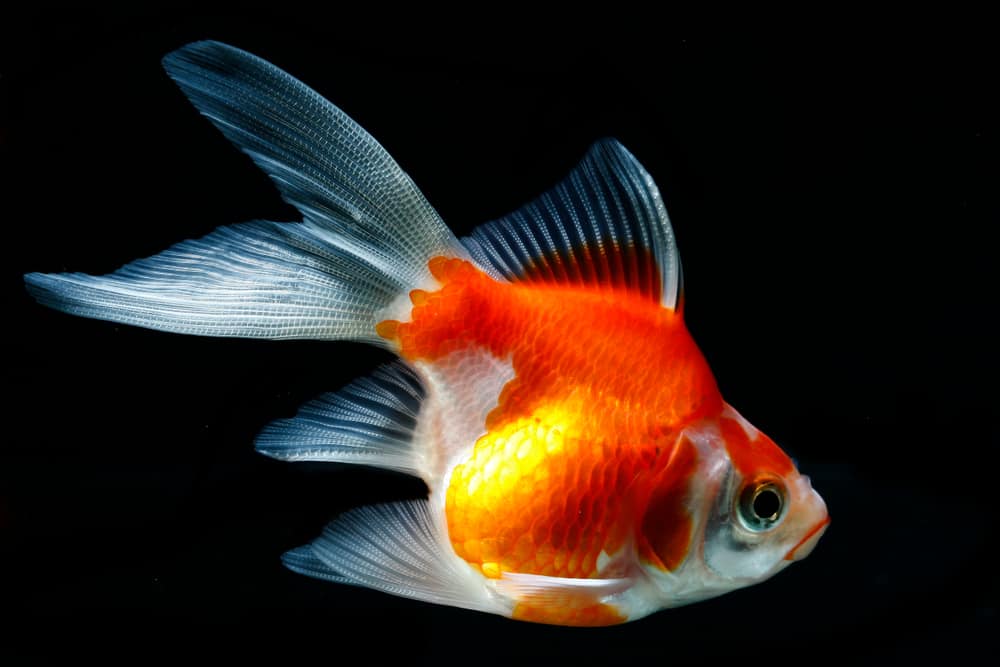
The Tamasaba goldfish is another rare Japanese breed.
They’re bred from Ryukins, and they inherit their humps and round bodies.
They don’t have the dual caudal fins, though.
They have a long single tail and a single anal fin.
Tamasaba goldfish grow about 10 inches, and you can find them in red and white.
They’re strong and hardy fish which can live in both ponds and aquariums, but given their body shapes, they can’t compete with slender goldfish types or swim as fast.
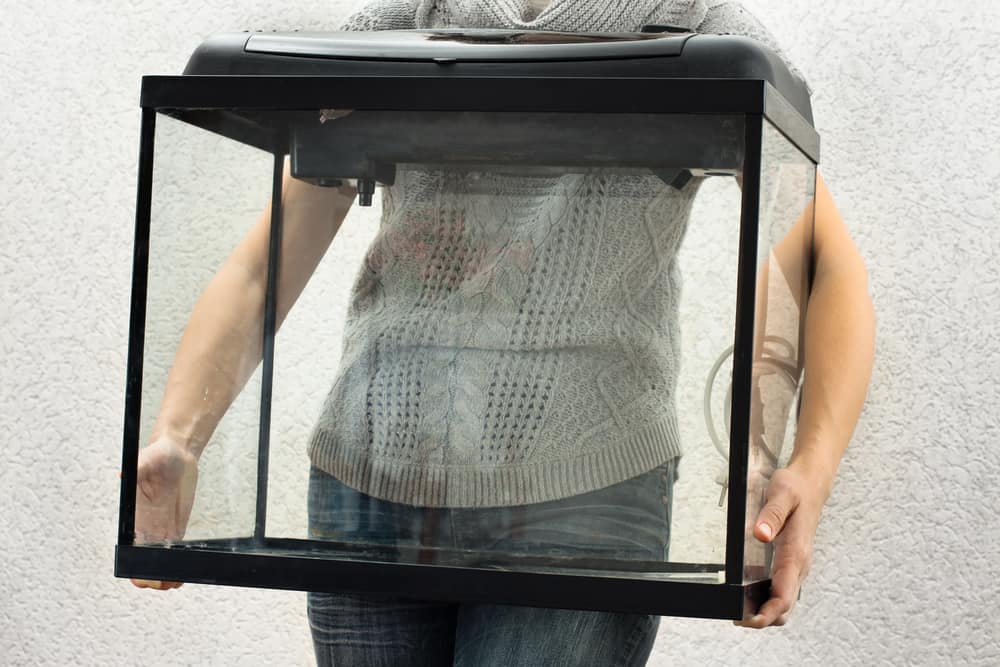
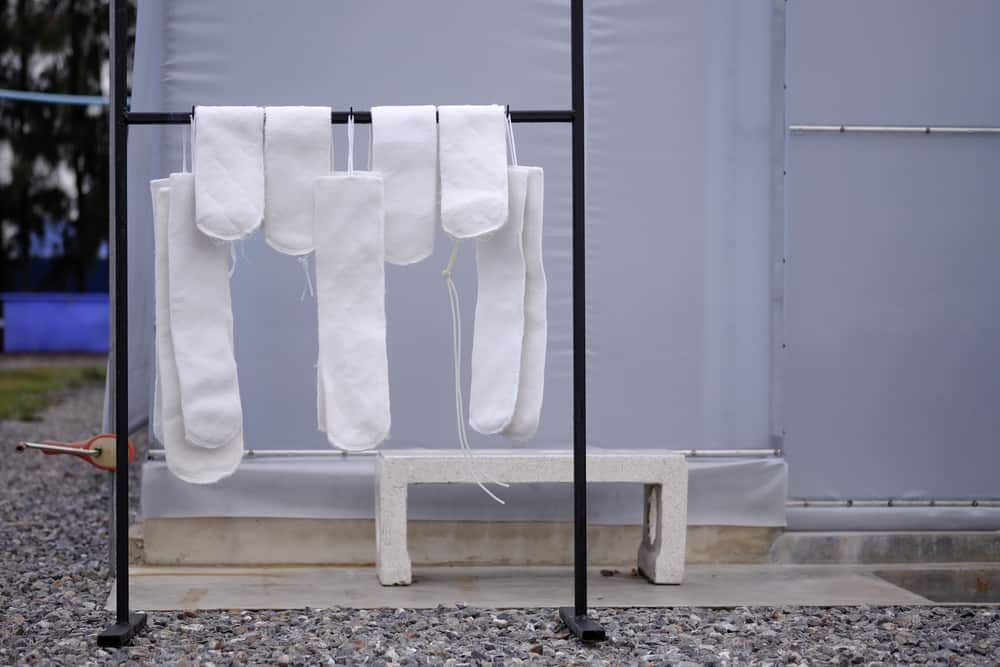
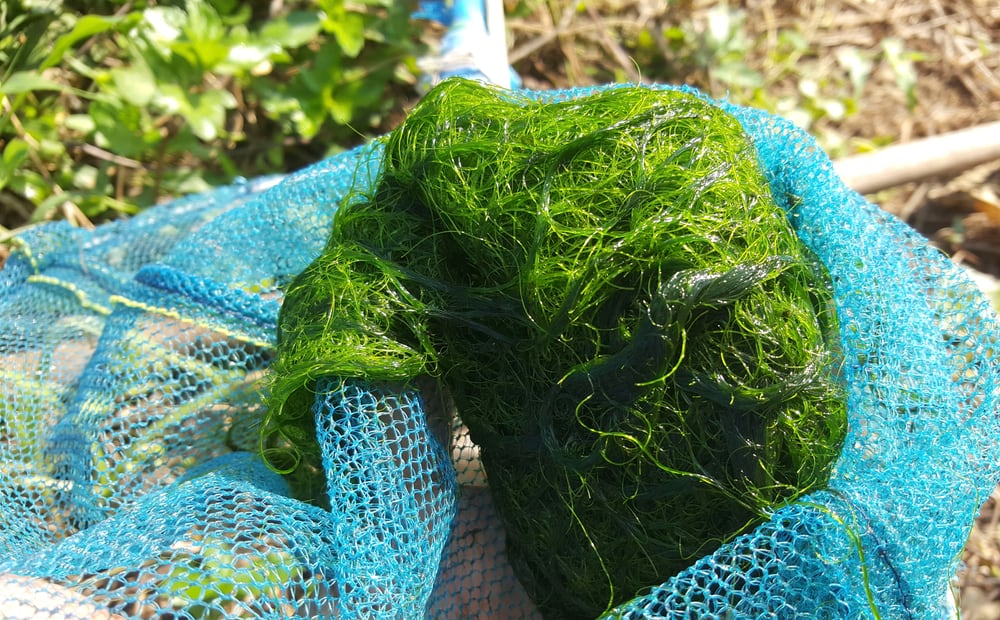
Nice article, I have a single shubunkin that was once calico now going white, Ginger of a pair with Fred.
Am now looking for a dwarf or smaller size of similar calico color. From your article looks like I could try Pearlscale or Tosakin, Thanks!
Hi I have a fantail goldfish
Are any of these goldfish fancy goldfish